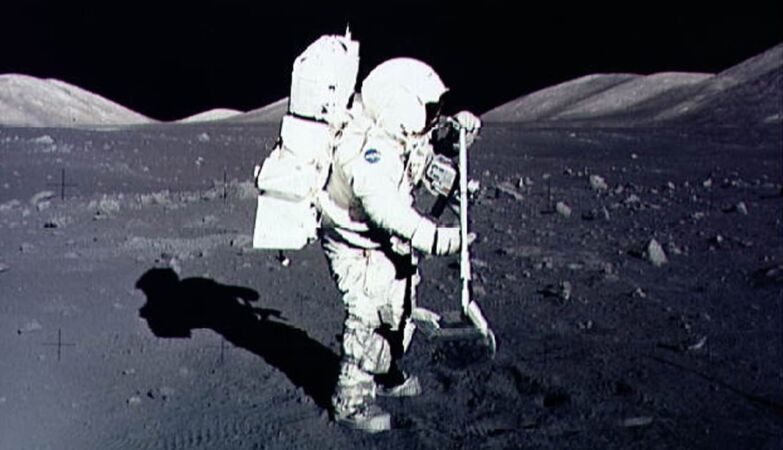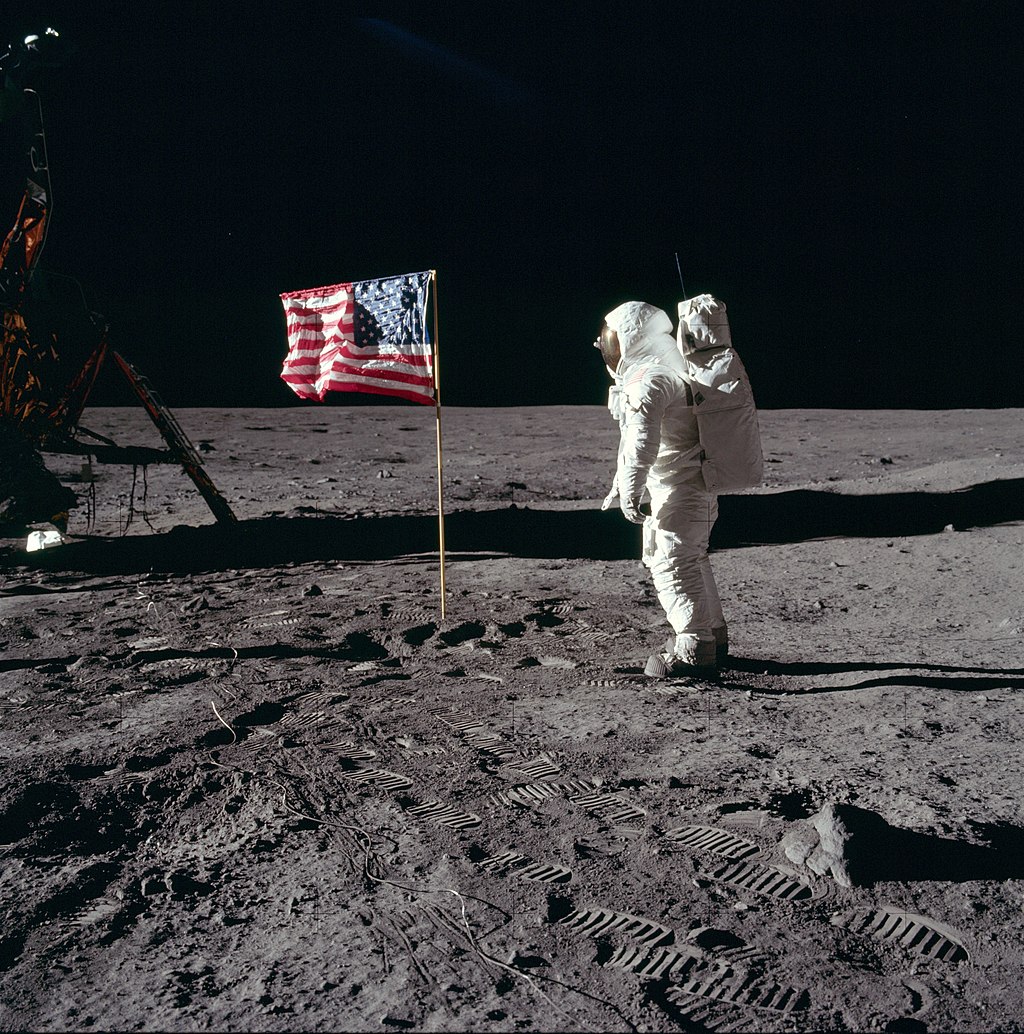segunda-feira, julho 21, 2025
Há 56 anos dois humanos passearam na nossa Lua...
Postado por
Fernando Martins
às
00:56
0
bocas
![]()
Marcadores: Apollo XI, astronautas, Buzz Aldrin, Lua, NASA, Neil Armstrong, rególito, USA
domingo, julho 21, 2024
Há 55 anos dois humanos passearam numa magnífica desolação...
Postado por
Fernando Martins
às
00:55
0
bocas
![]()
Marcadores: Apollo XI, astronautas, Buzz Aldrin, Lua, NASA, Neil Armstrong, rególito, USA
terça-feira, setembro 12, 2023
O triste caso do geólogo que foi à Lua e era alérgico à mesma...
O único cientista a andar na Lua, afinal… era alérgico a ela

O único cientista a caminhar na Lua, afinal era alérgico a ela. A descoberta aconteceu na última missão tripulada à Lua - Apollo XVII - antes do fim do programa Apollo, em dezembro de 1972.
Harrison H. Schmitt andou na Lua e descobriu que era alérgico à poeira lunar ao regressar ao módulo de aterragem, ainda na superfície lunar.
Segundo o IFLScience, enquanto esteve na superfície, Schimitt passou o tempo a recolher amostras de rochas à volta do vale Taurus-Littrow, perto do Mar da Serenidade.
Quando tirou o fato na segurança do módulo de aterragem, o geólogo entrou em contacto com poeira lunar, que tinha sido distribuída pela cabine.
“A primeira vez que senti o cheiro da poeira tive uma reação alérgica, o interior do meu nariz ficou inchado, podia ouvir-se na minha voz”, disse Schmitt no festival espacial Starmus em 2019, segundo o Telegraph.
“Mas […] gradualmente isso desapareceu para mim e na quarta vez que inalei poeira lunar não notei isso”.
Schmitt contou que não foi a única pessoa a sofrer uma reação alérgica à poeira lunar. Um cirurgião de voo teve de parar o trabalho, enquanto retirava fatos do módulo de comando, devido à força da reação que teve.
O cientista disse que o problema tinha implicações para futuras missões.
“Para alguns indivíduos, temos de descobrir se vão ter uma reação, se vão ser expostos cronicamente a poeira lunar”, disse.
“A minha sugestão é que nunca os deixemos expostos à poeira lunar e há muitas soluções de engenharia, desde que voei, para manter a poeira fora da cabine, para a manter fora do fato. Vai ser sobretudo um problema de engenharia“.
De acordo com a Agência Espacial Europeia (ESA), todos os outros astronautas sofreram, em certa medida, de “febre do feno lunar“.
Geralmente, os sintomas experimentados eram espirros ligeiros e congestão nasal que desapareciam rapidamente, embora por vezes pudessem demorar alguns dias.
Estão em curso esforços para resolver o problema, possivelmente agravado por um fenómeno improvável: a estática.
Na Terra, as partículas são suavizadas pela erosão do vento e da água, explicou a ESA, ao passo que na Lua – sem estas condições para as corroer – a poeira permanece afiada e pontiaguda.
Como a Lua não tem a nossa atmosfera para a proteger da radiação, o solo fica carregado estaticamente, enviando por vezes estas partículas pontiagudas para o ar e tornando-as mais suscetíveis de cobrir equipamento e entrar nos pulmões das pessoas.
“O tamanho das partículas de poeira lunar é particularmente preocupante e uma das questões que terá de ser abordada à medida que enviarmos mais astronautas de volta à Lua”.
“As partículas, 50 vezes mais pequenas do que um cabelo humano, podem permanecer durante meses nos pulmões”, afirmou Kim Prisk, fisiologista pulmonar envolvida em voos espaciais tripulados.
“Quanto mais tempo a partícula permanecer, maior é a probabilidade de efeitos tóxicos”.
Mas se para uns a poeira lunar pode ser a causa de uma alergia, para outros - nomeadamente o nosso planeta -, as nuvens de poeira lunar podem salvá-lo das alterações climáticas.
Um grupo de cientistas norte-americanos propôs um plano pouco ortodoxo para combater o aquecimento global: criar grandes nuvens de poeira lunar no Espaço para refletir a luz solar e arrefecer a Terra.
A proposta, que envolve o lançamento de cerca de 10 milhões de toneladas de poeira lunar no Espaço a cada ano, é engenhosa de certa forma – e se funcionar como anunciado do ponto de vista técnico, pode dar ao mundo algum tempo vital para controlar as emissões de carbono.
in ZAP
Postado por
Pedro Luna
às
18:50
0
bocas
![]()
Marcadores: astronautas, geólogos, Harrison Schmitt, Lua, rególito
sexta-feira, julho 21, 2023
Saudades de ver astronautas a passear no nosso satélite natural...
Postado por
Fernando Martins
às
00:54
0
bocas
![]()
Marcadores: Apollo XI, astronautas, Buzz Aldrin, Lua, NASA, Neil Armstrong, rególito
quinta-feira, julho 21, 2022
Saudades de ver homens na magnífica desolação...
Postado por
Fernando Martins
às
00:53
0
bocas
![]()
Marcadores: Apollo XI, astronautas, Buzz Aldrin, Lua, NASA, Neil Armstrong, rególito
quarta-feira, julho 21, 2021
Saudades da Lua...
Postado por
Geopedrados
às
05:20
0
bocas
![]()
Marcadores: Apollo XI, astronautas, Buzz Aldrin, Lua, música, NASA, Neil Armstrong, rególito
domingo, julho 21, 2019
Os primeiros passos de um humano (Neil Armstrong) noutro planeta foram há cinquenta anos
Postado por
Fernando Martins
às
00:50
0
bocas
![]()
Marcadores: Apollo XI, astronautas, Buzz Aldrin, Lua, música, NASA, Neil Armstrong, OMD, rególito




